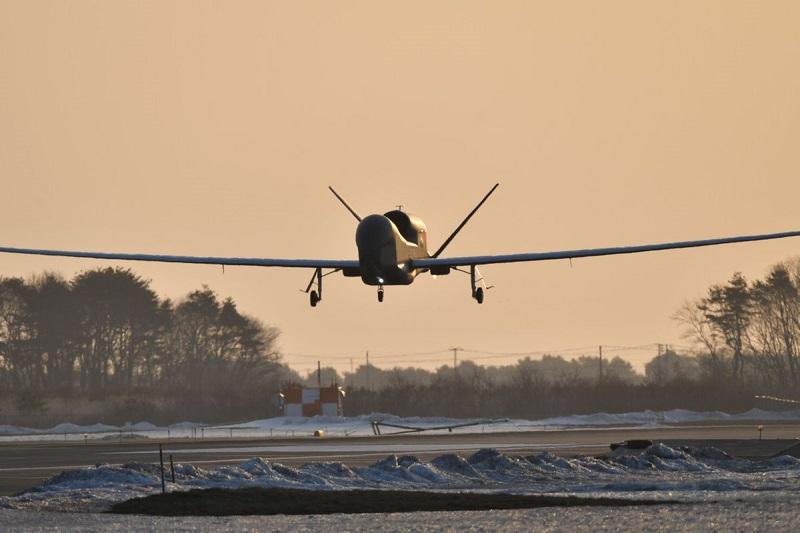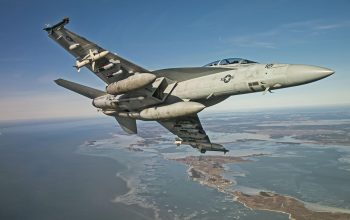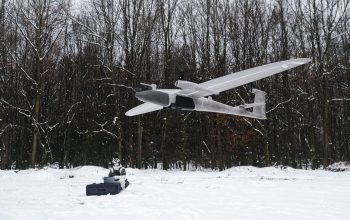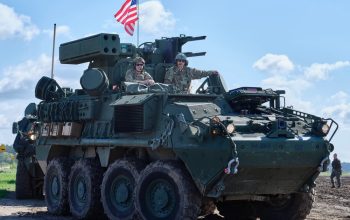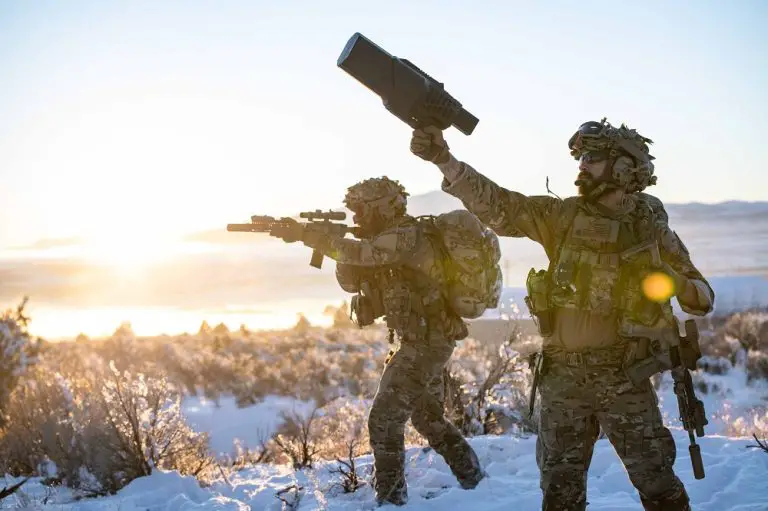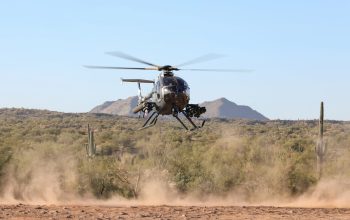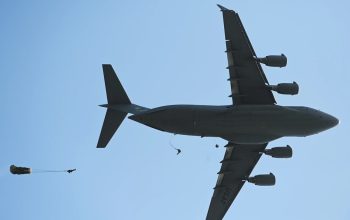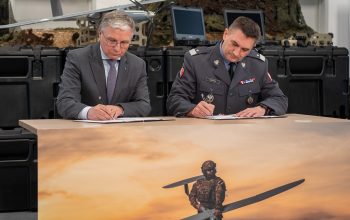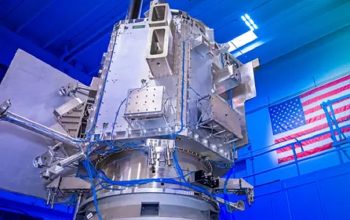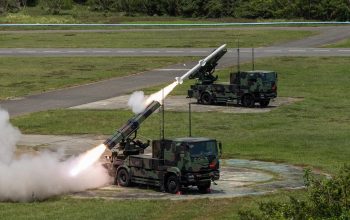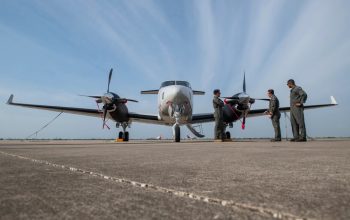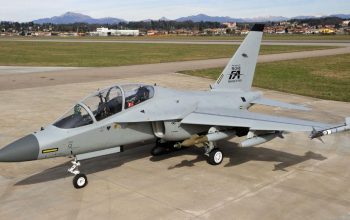The Japan Air Self Defence Force (Koku Jieitai, JASDF) has taken delivery of the first of three RQ-4B Block 30(I) Global Hawk remotely piloted aerial systems (RPAS) from US defense contractor Northrop Grumman. Photos of the aircraft on arrival showed its Japanese markings covered over by temporary USAF insignia for the ferry flight. However, its Japanese-assigned serial number ‘23-6003’ was evident on the tails. The Northrop Grumman autonomous HALE aircraft landed at Misawa Air Base in the northern part of Honshu, which will be the home base for all three Japanese Global Hawks. The JASDF’s Reconnaissance Air Group will operate the Global Hawks. U.S. Global Hawks have been operating jointly with the JSDF for several years.
The Northrop Grumman RQ-4 Global Hawk is a high-altitude, remotely-piloted surveillance aircraft. It was initially designed by Ryan Aeronautical (now part of Northrop Grumman), and known as Tier II+ during development. In the RQ-4 name, the “R” is the Department of Defense designation for reconnaissance and “Q” means unmanned aircraft system. The “4” refers to the series of purpose-built remotely piloted aircraft systems. The “E” in EQ-4 delineates the communication configuration of the BACN equipped aircraft. The RQ-4 provides a broad overview and systematic surveillance using high-resolution synthetic aperture radar (SAR) and electro-optical/infrared (EO/IR) sensors with long loiter times over target areas.
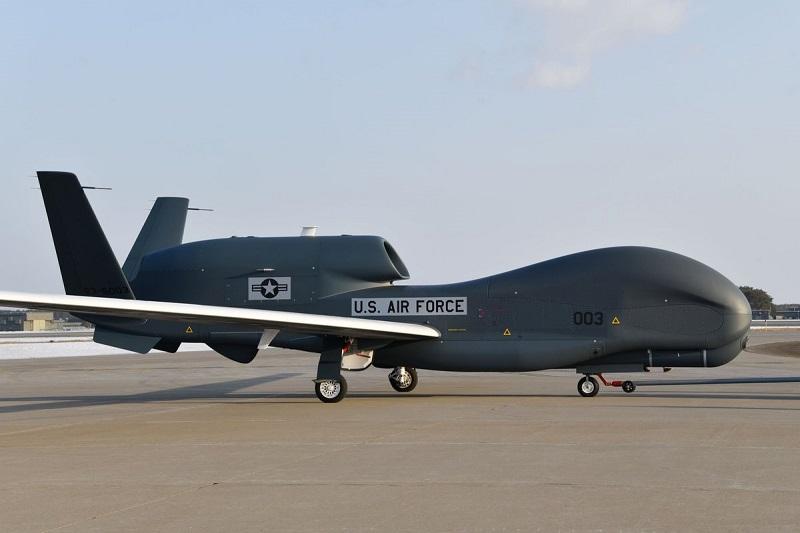
Global Hawk is currently fielded in three distinct blocks. Seven Block 10 aircraft were procured, but were retired from the Air Force inventory in 2011, Block 20s were initially fielded with IMINT-only capabilities. Block 30 is a multi-intelligence platform that simultaneously carries electro-optical, infrared, synthetic aperture radar (SAR), and high and low band SIGINT sensors. Block 40 Early Operating Capability (EOC) was declared in Sep 2013 and eleven Block 40s are currently fielded, supporting operations in four combatant commands. Global Hawk is flown by a Launch and Recovery Element (LRE) and a Mission Control Element (MCE). It can survey as much as 40,000 square miles (100,000 km2) of terrain per day, an area the size of South Korea or Iceland.
On 24 August 2013, Japan announced that the JASDF planned to operate one Global Hawk jointly with the U.S. by 2015. On 21 November 2014, the Japanese Ministry of Defense officially decided to procure the Global Hawk, which beat out the General Atomics Guardian ER; Japan has also been interested in the purchase of three aircraft. The contract will deliver three RQ-4B Block 30(I) Global Hawk under a contract worth $489.9 million. The RQ-4 Global Hawk is a high-altitude unmanned aerial vehicle used for intelligence, surveillance, and reconnaissance operations. It has a wingspan of over 130 feet and has a maximum takeoff weight of 16 tons, making it unusually large for a UAV. The RQ-4 has a range over over 12,000 miles and can stay in the air for more than 34 hours.


